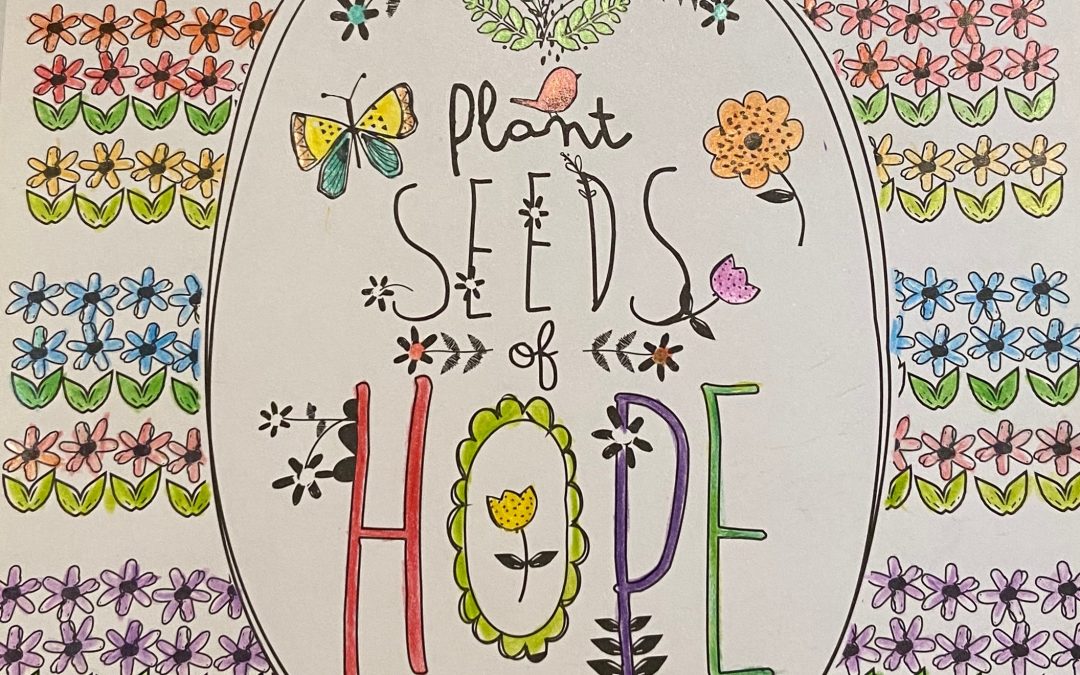
by Marcia Davis-Dawkins | May 13, 2020 | Education, Kids, Parents, Teachers, Teens
Springtime!
By Dr. Marcia Davis-Dawkins
Hello everyone,
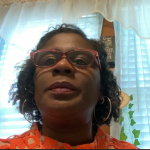
Message for you. Click to listen
I’m bringing you this blog in a different format primarily because of the topic for discussion. Since it is springtime, which brings about change and change is not a new topic to my blog as almost 2 years ago, I wrote on the topic “Change Our Positions!” Why the same topic you might ask? Well, change seems like it is ongoing and like the seasons – always changing. Hence, Springtime. What do you know about Springtime? Well, you are right when you say it brings rebirth, renewal, blossoms, growth, productivity, newness, cleansing, among other things. Not many people like the word “change’ because it means getting up and actually doing something instead of being stuck doing the same routine every day. I, for one, don’t really like change. In fact, I had to think long and hard about changing the way I am presenting this blog and when it was brought to me by a colleague, I thought it was different but seemed interesting, so here goes! 
I am sure you are tired of hearing and/or reading about COVID-19, and I can’t help but say that COVID-19 will help us to make changes whether we like to or not. This pandemic has forced us to change our perspective and look at many things differently. It has and will help us change the way we relate to each other. One thing that is already etched in my mind is that this year I had my first virtual birthday party, all because of COVID-19. I would never dream of this happening and guess what? It was a fun filled party with no expense, no frills or horse & pony show. It will indeed be memorable because it was different, and my friends were not in the same house, state or even country with me. The important thing is that I was present. Apart from being present, I had fun and so did my guests (friends). The COVID-19, Corona virus changed our norm, changed our standards and charged us to change our foundation and make sure it was solid. We were/are forced to change our direction, slow down and do some self-love. We didn’t embrace the changes, but we can embrace the way we do things and make the best of the situation.
As we make changes in our personal lives, educators are making changes in the way we teach, present lessons, and even we way think for that matter. The newness in education seems frightening for some and for others adventurous. Most of us are accustomed to changes in curriculums, to evaluations, students, schools, new school year, administrations, policies, laws and other things, so then why not a new way of teaching because of the threat of COVID-19? Well, might I say that it is because most of us are afraid of the unknown! Change sometimes seems slow but then can also come quickly and suddenly.
I believe it is important to approach the change and the new norm without blinders, learn from all the opportunities that will present themselves and stay focused, so we are not left behind. Covid-19 came without warning and suddenly, there is a new norm, we literally had to obey the order to “Get work for students, give work to students, stay home, and teach from home!” We are now forced to make a difference in the way we teach. As we are teaching from home, we are realizing that we have to be more patient in the way we give students directions as well as what work we are expecting them to give us. We have to refuel, when our tanks are empty, so I believe the call is for us to use the time to refuel so that the seeds we plant in our students will bloom when all is said and done. Teaching and learning are now online – Life as an educator after this dreaded COVID pandemic should be a reflection of “good” change in this unchanging world. We should seek to change our norm to a new way of teaching. The teaching profession is normally very nurturing, yet some of us are not nurturing, we could change the way we relate to our students, help them feel like they belong. Help them feel better about themselves, maybe they have another way of learning and we didn’t realize, well, it’s our job, to find the way they learn and be more accommodating. The idea is that when all of this is said and done, everyone, including educators should come out better than we did before. In this Springtime, and Covid-19, this pandemic is teaching us to let go of the old way of communicating with our students, parents and colleagues. Fresh perspectives! Embrace the new and shift to better! Like Zig Ziglar once highlighted “The 3 C’s of Life:
You must make the choice, to take a chance, if you want anything in life to change.”
Education and Success
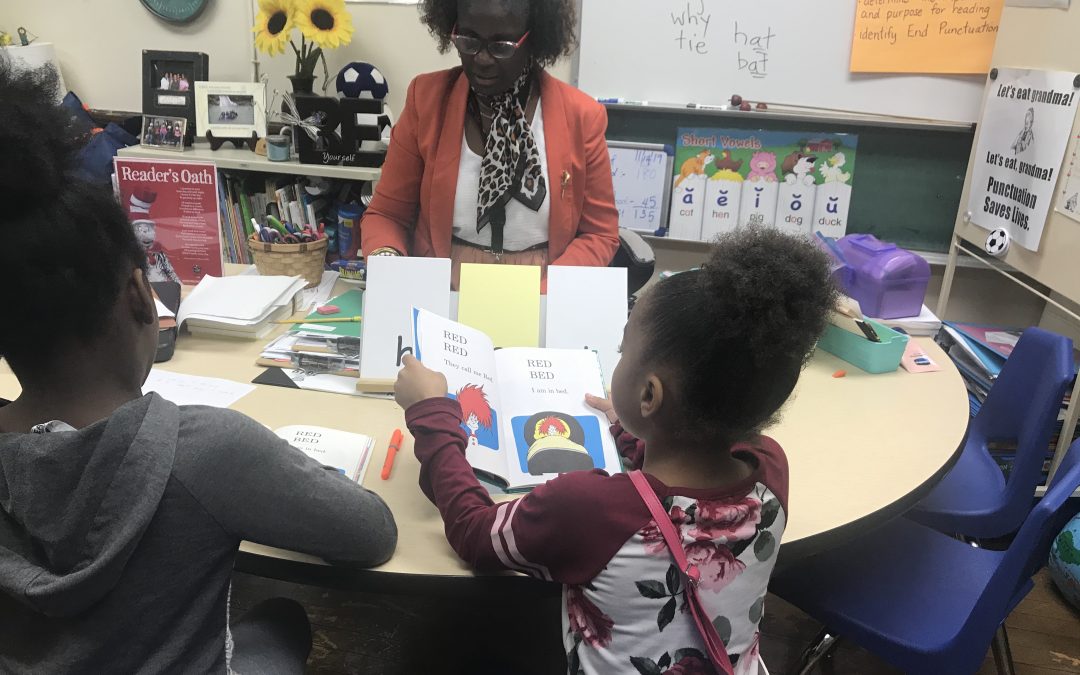
by Marcia Davis-Dawkins | Apr 10, 2020 | Education
Dangerous Disturbances

By Dr. Marcia Davis-Dawkins
Music has always been a source of inspiration, a time of reflection and motivation and I recently heard a song during the dreaded COVID-19 pandemic that we faced and I thought of how disturbed this virus had made us. The song, titled “Dangerous Disturbances”, by a Jamaican Reggae group called Chalice, refers to reggae taking over the world and I thought how interesting that it is indeed a shock how the human coronavirus has literally taken over the world.
Because of this virus, everything has come to a halt. Well carved out plans, which were put in place months and years ago, are disturbed. Plans that have disturbed our peace of mind and sent us scurrying and wondering what next. This dangerous, disease came and disturbed us in so many ways. It brought about scarcity of common household items including paper products, cleaning items, disinfectants and variants of food.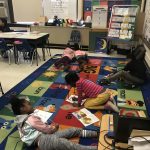
Teachers are collaborating and gathering ways of teaching from home. Who would have thought that this was possible for teachers, especially for elementary teachers, to be working from home? What a challenge this has been. The same invisible disease has incited fear in so many of us in us on a global scale. Well, new things are happening and 2020 – a leap year too, has been disturbed in many ways. With teachers working from home, parents are forced to become teachers and educate their children.
It is sad realize that some students will not get the support from some parents and we wonder how they are surviving – we know that there are students who definitely need teachers to encourage and support them. There are students who are desperately seeking love, kindness, wisdom and understanding from many of their mentors and may not receive. We often think of those students who have stopped learning and are distracted by various entities within their home environments and wish they could be in the school setting. For some, school is a part of their regular schedule and may even comfort them.
Students who may have been preparing to take state tests or final exams have plans that have been disturbed. These exams would have determined which student would be promoted to the next level of schooling or the next level in life. Suddenly, these plans are simply wiped out.
As educators, we are grateful for technology that is available. This technology gives us opportunities to encourage learning, as well as to teach virtually. I recently saw that one person even referred to this form of teaching as “quaran-teaching”. To top it off, there is a definition that states “teachers scrambling to prepare for digital learning with zero training, funding, or assistance, for an undisclosed amount of time, for parents who have an equal amount of preparation.”
For whatever it is worth, I hope that this dangerous disturbance is bringing, a sense of connectivity and most of all love in the family. Families that are isolated and quarantined are often too busy to even talk to each other have finally received the chance to truly get to know one another in this time of crisis. Dangerous disturbances cause us to pause and reflect on our lives and to think of those around us. Interestingly, the disturbance didn’t affect a certain, race, color, creed or country – everyone was disturbed! 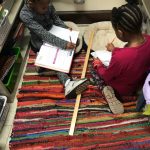
Students and teachers who are confined in their homes and fearful and tend to feel hopeless, but I certainly will not encourage it. There is a sense of hope and love among each other. The educators are hoping that even though we are not connected physically, there will always be a way to connect virtually; there will always be a way to put our hearts in it. As the late Country and Western singer Kenny Rogers, would say, “When we put our hearts in it, it can take us anywhere, and who’s to say that we can’t make it, it’s the same dream that we share.”
There are many questions we may have, but in the end, we will be drawn closer to each other and assist our neighbors, families. So many losses, so many broken promises, so many broken plans – plans that are simply wiped out (disturbed) because of the pandemic. Amidst our challenges, though seemingly disturbing, is a hope that we, as educators, can send wonderful messages of encouragement to our friends, families and students. Hopefully we will find the good in the disturbance.
Even though there are fears, fears of not knowing enough for an exam, fear of what is going happen to students, or just fear of the unknown, we can see that there is a silver lining behind the dark cloud. This disturbance is giving us a chance to be attentive to our way of life, our way of teaching and the hope is that; our students’ families are able to get to know their family members again through bonding and talking to each other. They can read, play, be creative and problem solve together. The idea is there is a sense of support and renewal in the family. Most of all, the dangerous disturbances usually help to discover and reveal the true us. Through the educators collaborating, there is a new sense of community, creativity and shared responsibility. We are all in this thing together and we will work things out. We are in solidarity!
Fear
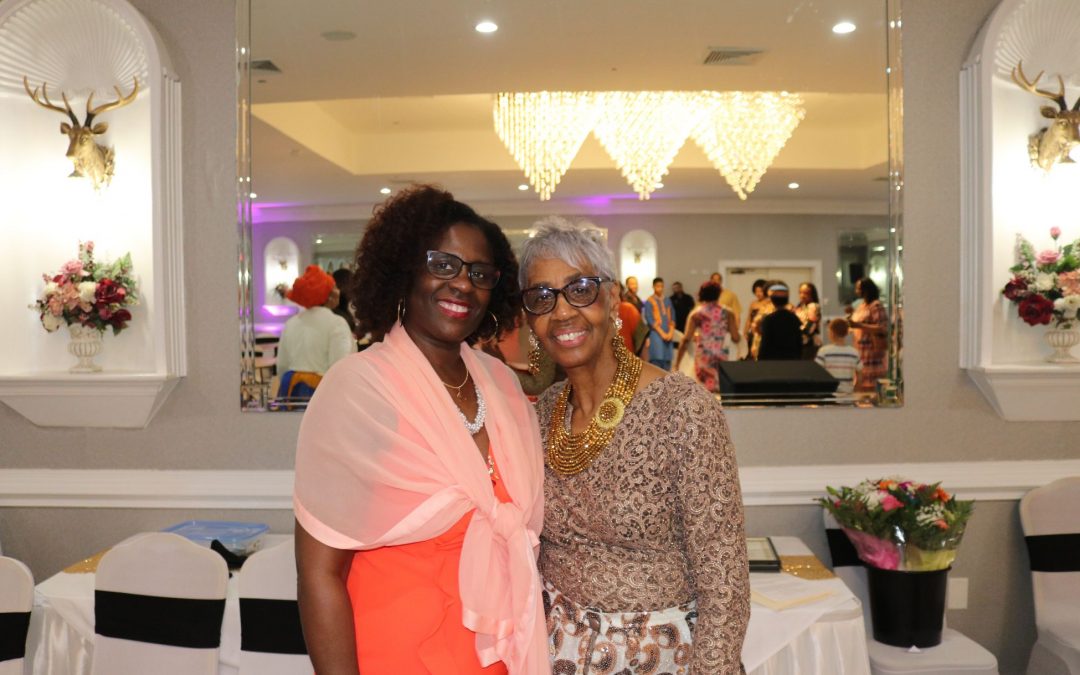
by Marcia Davis-Dawkins | Mar 24, 2020 | Education, Kids, Parents, Teachers, Teens
Generational Impact – What is Your Legacy?

By Dr. Marcia Davis-Dawkins
February was Black History Month in some countries, including the United States of America. Throughout the month, time was set aside to highlight and celebrate some notable history makers in our lives. At times, it seems as if we only celebrate certain people while omitting others. Maybe we can’t celebrate everyone, but at least highlight a new person or two, and not continue to celebrate the same every single year. Maybe we should celebrate people who make a difference in our lives daily and not simply wait for February. This could, no doubt, help students to learn to celebrate and feel good about themselves.
It really takes a village to raise a child and even though some period don’t believe that we can and should say anything to children in the 21st century, it really makes a difference when you do have certain people in the village who are still willing. A few months ago, I lost a colleague, a friend and a mother figure to me. It was sudden and unexpected. This loss hit, dare I say, “Like a ton of bricks!” I knew she was sick, but I kept praying for the best, or plainly put, for her to come through, I believed she would recover and come back to work where we would sit and exchange wise and pleasant talks about human nature and how we could help shape some of our troubled students. The weight from the bricks sent me in a downward spiral because I soon realized that she was really gone and we weren’t able to talk again. Needless to say, I miss her warmth, her wise talks, her understanding and calm sense or twist on a bad situation? Well, even when things just seemed unbearable, this friend/colleague/mom would speak wisdom into my heart and make me realize that “we must look on the bright side of life.” In fact, I can envision her sitting up in her chair, moving her neck from side to side and then saying, “Dr. D, let’s see what this means and how we can get another perspective.” It is as if changing her stance and moving her neck were the signal that she was getting more wisdom to pass on to me.
This person I cannot claim for myself, because she represented the same “idol” to so many other persons. Truth be told, she was like that to so many other people and, in particularly, to the students at the school where we worked. Students would get in trouble and be sent to the principal’s office and she would be a ray of sunshine to the students. As a matter of fact, it seems as if some students wanted to get in trouble and be sent to the office so they could get some of the “good wisdom talk.” The fact that she was able to mold and mentor them simply made my heart melt, and it didn’t matter who the student was, she saw potential, possibility, and promise in that student. Her calm spirit, her presence, her elegance, her aura, her demeanor were evident when she was around.
At school, she was honored during Black History Month, and while this effort was laudable, I would propose a somewhat different approach. She was an ardent proponent of the Amistad initiative and pressured the school board to make it a reality. If we truly want to honor her legacy and continue her work, we must TEACH WHAT SHE PREACHED. In place of a memorial that will come and go, ensure that black history is an integral part of the curriculum, all year long, not limited to a shallow exercise during February and then abandoned. Reject merely teaching about historical “ firsts,” such MLK, Rosa Parks, Jackie Robinson, etc. While every student should, of course, recognize these people, limiting lessons to this leads students to believe that Black History consists of a few heroic characters. Focus on and highlight the often-unacknowledged contributions that so called “ordinary” people of color make EVERY day. In doing so, her passion lives on, long after the plaudits and commendations of a memorial fade.
It is my aim that I am able to leave a legacy that would make this person proud and that people will remember me for my sense of peace and kindness. That somehow, I am known for the fruit that I grew based on the seeds that were planted or sowed. Did I spread good news or spread love and peace just like my former colleague? Did I spread the good news to my students or people that I meet, to imply that they were special in their own special way/s?
I, without a doubt, want to hear the words as quoted below:
“If it falls to our luck to be street-sweepers, sweep the streets like Raphael painted pictures, like Michaelangelo carved marble, like Shakespeare wrote poetry, and like Beethoven composed music. Sweep the streets so well that all the hosts of heaven and earth would have to pause and say, “Here lived a great street sweeper.” ~Dr. Martin Luther King Jr. addressing the Jamaican crowd in the National Stadium in 1965.
(Source: Dr. Rebecca Tortello, Pieces of the Past ~ The Gleaner)
I want to be the sowers of great seeds so others reap beautiful and tasty fruits.
Family is Everything
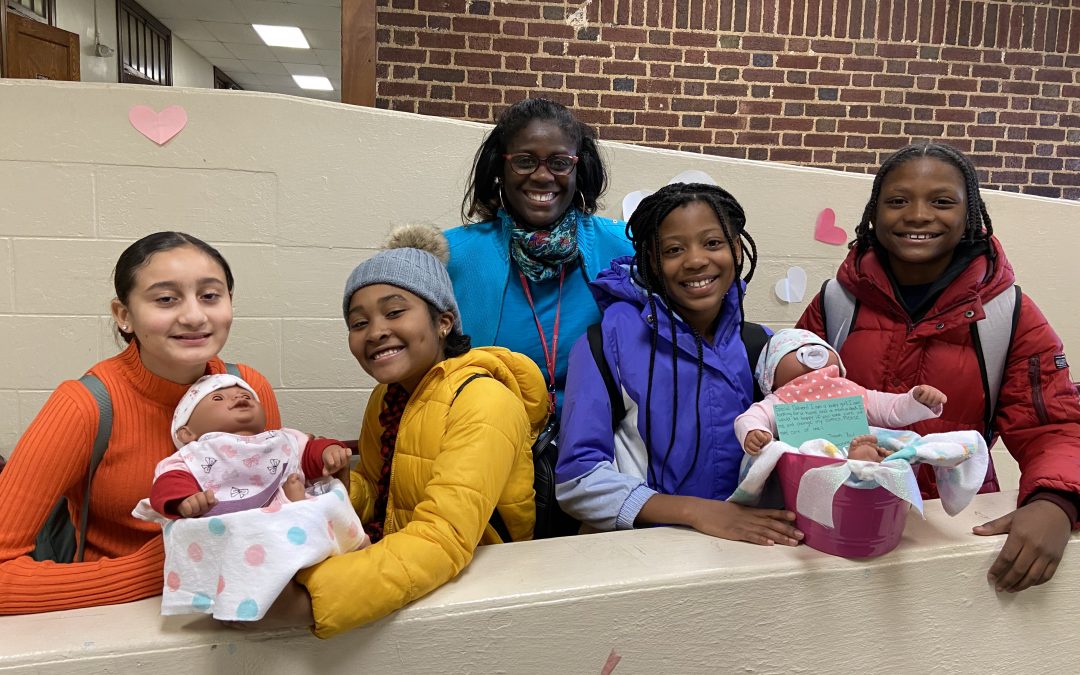
by Marcia Davis-Dawkins | Mar 4, 2020 | Education, Kids, Parents, Teachers
Love and Care; From Our Youths to Our Nursing Homes

By Dr. Marcia Davis-Dawkins
Recently the Student Council Advisors (including me) took the members of the School’s Student Council to a Nursing Home close to our school. We are teaching students that they should value all ages in our community, from the very young to the very old. But the oldest in nursing homes and assisted living facilities suffer from dementia and Alzheimer often feel isolated and excluded. Developing stronger connections between older adults and students in the community can have tremendous benefits for both residents of these facilities and students. The student council was involved in The Cuddle Care Project, which offered students the opportunity to make a difference in an older person’s life, while instilling respect for elders, sensitivity for others different than themselves or in need, and lessens self-centeredness. This was accomplished by providing patients with therapy dolls that will become an integral part of their lives.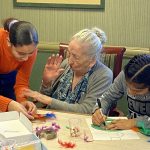
As many as 90% of seniors with dementia or Alzheimer’s struggle with some sort of distress, due to the disease. Caregivers try to ease the burden by giving patients life-like dolls to love and care for. The dolls become an integral part of a senior’s life and caring for the doll as they would care for a baby becomes a major part of their day-to-day responsibilities. Doll therapy, also known as cuddle therapy, may bring back some happy memories of early parenthood and help seniors feel useful and needed. Studies demonstrate that this therapy can be used to increase positive behaviors and decrease negative behaviors in users and is an effective approach in caring for seniors afflicted with dementia. Baby dolls can calm someone who is upset, provide endless hours of hugs and smiles, lull a person to sleep, create a distraction from an upsetting event, provide a tool for interaction, regenerate warm, nurturing feelings and make it possible for someone totally dependent on others to care for someone else.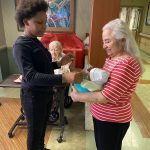
Students read The Sunsets of Miss Olivia Wiggins by Lester Laminack. This is the touching tale of a woman who resides in a nursing home and who seems to live more in the past than in the present. This book gives voice to the often silent tragedy of watching a loved one slip into the clutches of Alzheimer’s. A discussion was followed focusing on the needs we all have regardless of age: to feel useful, needed and wanted, targeting the relevance of these needs among individuals who are elderly. Students were then introduced to the project. They prepared dolls for distribution to elderly. Students dressed dolls, wrap in receiving blankets and placed in carry all. They also chose an extra outfit as a change of clothing for elderly to utilize on doll. There were eight dolls, five of which were provided by the Rahway National Council for Negro Women (NCNW), those were presented to some residents of the Nursing Home.
This project exposed students to the informational topic of Alzheimer’s, which can be dry and clinical when solely read about. The doll project, visitation, and subsequent discussion brought the subject matter to life. This project also presented an awesome opportunity for intergenerational relationships, and is a great way for students to get a different sense of perspective and context of history through communication with elderly. When students visited the Nursing Home, they were able to interact some of the patients and made crafts with them. The patients along with the students made crafts and there was definitely a positive interaction with both sets of parties. The smiles the patients’ faces spoke volumes when they received the dolls (their babies) to cuddle. Patients were particularly happy since they rarely received visitors. Students also asked patients if they could give advice to a younger them what would it be. To which one of the patients responded that he would tell them to be a leader not a follower because they could end up in jail. Another student asked, “What was your fondest childhood memory?” One patient’s response was that, “She enjoyed visiting her grandmother’s house.”
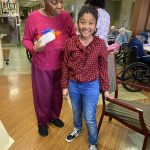 The students learned how to interact with people other than their peer group and learned responsibility and civic duty. While their work on the doll project remained anonymous to the residents, it instilled in them the value of making a difference in someone’s life and emphasized the importance of volunteering. One of the students when asked what was his favorite part of the trip to the Nursing Home, his response was, a beautiful woman at the Home was asking him questions about what he was going to do in the future that he told her stories about her life. She had a big smile on her face. She was also very strong.”
The students learned how to interact with people other than their peer group and learned responsibility and civic duty. While their work on the doll project remained anonymous to the residents, it instilled in them the value of making a difference in someone’s life and emphasized the importance of volunteering. One of the students when asked what was his favorite part of the trip to the Nursing Home, his response was, a beautiful woman at the Home was asking him questions about what he was going to do in the future that he told her stories about her life. She had a big smile on her face. She was also very strong.”
According to one of the Activity Aide, “The residents are very happy because they were engaging – they used their tactile, visual, verbal and a whole lot of love. Patients loved the interaction and the special attention they received.” This was also therapeutic for them. It also showed students that it is good to be compassionate to everyone – both young and old.
To quote President Obama:
“We celebrate the selfless individuals around our country who channel their civic virtues through volunteerism… devoted to a cause bigger than themselves…. Volunteers help drive our country’s progress, and day in and day out, they make extraordinary sacrifices to expand promise and possibility.”
Love for Everyone

by Marcia Davis-Dawkins | Jan 6, 2020 | Education, Parents, Teachers, Teens
Perspective

By Dr. Marcia Davis-Dawkins
“The difference between a flower and a weed is a judgment.” I wish I could take the credit for those words but I can’t. The credits go to the late Wayne Dyer, an American author and motivational speaker. Then Ralph Waldo Emerson puts a further twist to it by expanding that a weed is a plant whose virtues have never  been discovered. There are so many people who have varying points of view and ways of seeing things; yet, some are not willing to have an open mind or even opening the lenses. As I get older, I have learned not to cast judgments because I don’t know the situations that people are in and I don’t even know how I would feel if I were in the same circumstances – as a result I don’t judge. Instead, I think or wonder what could cause the person to act or respond a particular manner. It is often easy to assume, or even do the stereotypical norm, rather than to ask people if they are okay or just simply to respond with a smile.
been discovered. There are so many people who have varying points of view and ways of seeing things; yet, some are not willing to have an open mind or even opening the lenses. As I get older, I have learned not to cast judgments because I don’t know the situations that people are in and I don’t even know how I would feel if I were in the same circumstances – as a result I don’t judge. Instead, I think or wonder what could cause the person to act or respond a particular manner. It is often easy to assume, or even do the stereotypical norm, rather than to ask people if they are okay or just simply to respond with a smile.
As we enter this New Year and decade, one of my mantra is that I should encourage others to not be judgmental. Also, where possible, perish the thought of having had similar experiences and therefore believe it is shameful to be emotional or wear emotions on the sleeves. Technically, I am a stranger who does not have a full grasp of the person’s issues nor I am capable of looking at it from their perspective. So often, we are quick to make judgments without knowing the person reasoning behind the actions. I recently saw a cartoon, which I considered funny. A man and woman are sitting at a table in a restaurant, dining, the woman had a huge plate of food in front of her and she said that it was the man who was supposed to pay because of the word, ‘MEN-U’. The man on the other hand, (who had only a glass with water), said it was both since the word said, ‘ME-N-U’, clearly this was a matter of whose perspective – the man’s or the woman’s!
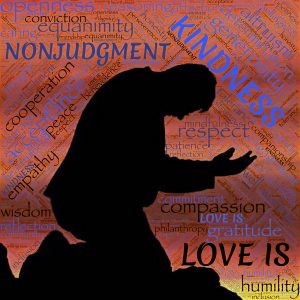 Then we can look at it from the classroom, one teacher might grade a paper based on his or her way of interpreting while another give another grade, who is to say that either teacher is wrong? I suppose that is why there is a rubric used to grade papers so that each person involved will know the established standards.
Then we can look at it from the classroom, one teacher might grade a paper based on his or her way of interpreting while another give another grade, who is to say that either teacher is wrong? I suppose that is why there is a rubric used to grade papers so that each person involved will know the established standards.
Then there is cultural perspective which, simply put, refers to the manner in which individuals are shaped based on their environment. Just thinking about “culture” and the way various people view things and situations can be interesting. A cultural perspective is also the point of view from which each individual person sees the same situation – when culture is mixed with point of view it or perspective it means that one person is seeing a situation based upon their beliefs, values, experiences that are commonly found in their own culture. I suppose that’s one of the reasons if people marry outside of their culture there can be chaos or misunderstanding. Even words can be misinterpreted in one culture versus another. I once experience this where my sister was braiding someone’s hair and based on the braiding process, she was hurting the person’s scalp. My sister’s word was “hush”, which meant that she was saying, “never mind, the braiding process will be over soon.” On the other hand, the young lady whose hair was being braided did not take kindly to that word. She thought that my sister was say that she should be quiet! I realized the misunderstanding and immediately had to explain the confusion. I suppose it would be remiss of me to talk about  perspective without giving a few more examples of how perspective affect family. One person might think that family is important and another think it is not. Yet whatever the person is doing does not adequately demonstrate the importance of family. One person might be saying it is important but does not want to spend time with the family during special ‘family’ holidays. Similarly, another might believe that bigger is always better or that entertainment is more important that the value placed on education. Are we able to separate our perceptions from our decision making? In all honesty, we sometimes allow our perception to get in the way of a new learning experience or simply getting to know someone. Are we willing to run that risk by simply casting judgments? This decade, we should seek to understand and be ready with a possible alternative suggestion rather than cast judgment. Who says that one person’s weed isn’t another’s flower? Similar to one person’s trash being another’s treasure!
perspective without giving a few more examples of how perspective affect family. One person might think that family is important and another think it is not. Yet whatever the person is doing does not adequately demonstrate the importance of family. One person might be saying it is important but does not want to spend time with the family during special ‘family’ holidays. Similarly, another might believe that bigger is always better or that entertainment is more important that the value placed on education. Are we able to separate our perceptions from our decision making? In all honesty, we sometimes allow our perception to get in the way of a new learning experience or simply getting to know someone. Are we willing to run that risk by simply casting judgments? This decade, we should seek to understand and be ready with a possible alternative suggestion rather than cast judgment. Who says that one person’s weed isn’t another’s flower? Similar to one person’s trash being another’s treasure!
Misunderstood
HOME








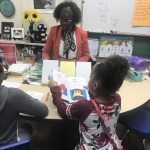
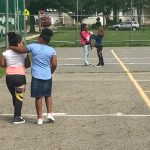
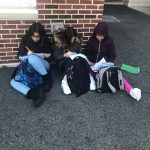
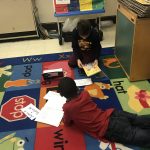
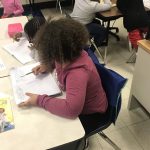
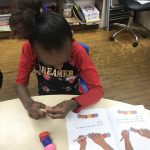
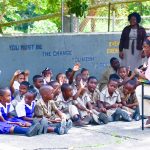

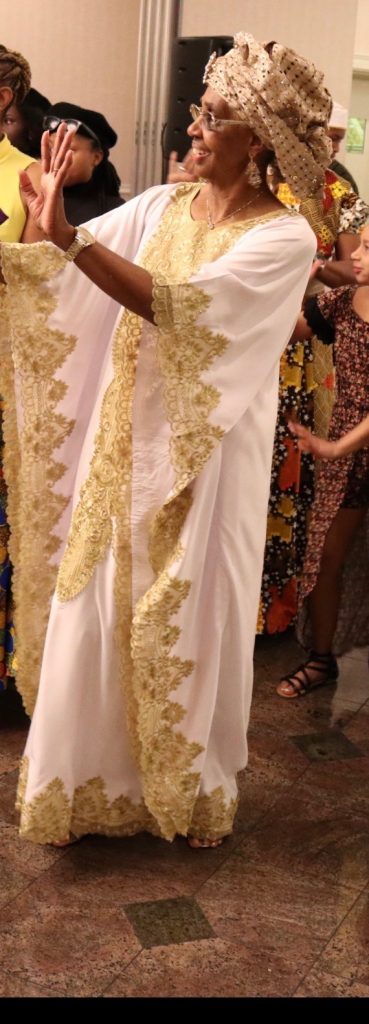

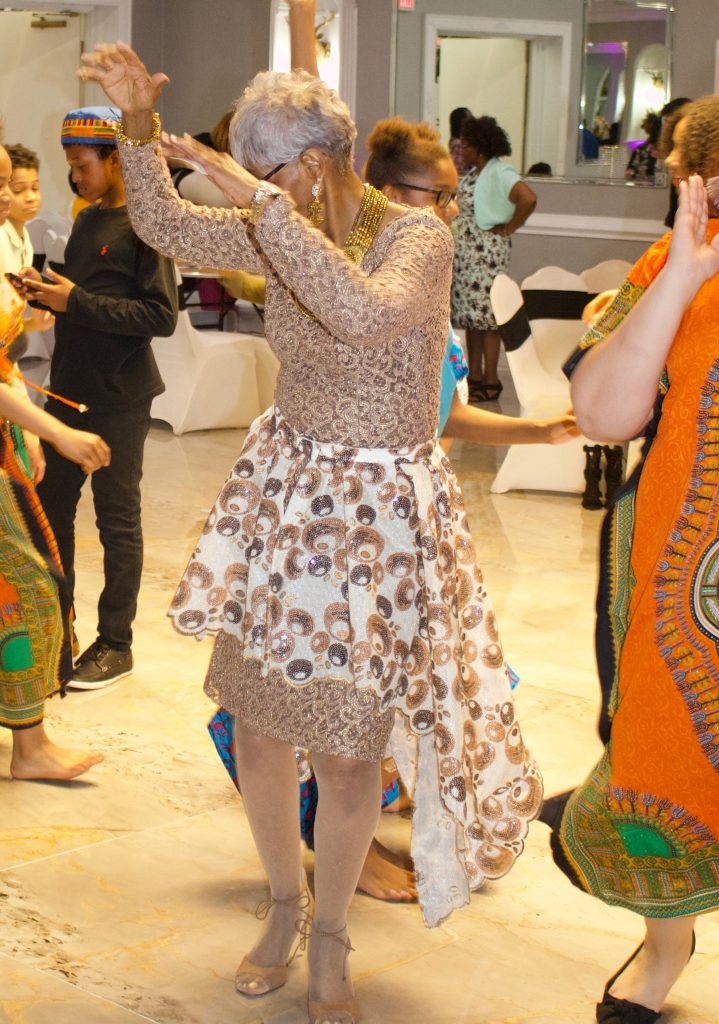




 The students learned how to interact with people other than their peer group and learned responsibility and civic duty. While their work on the doll project remained anonymous to the residents, it instilled in them the value of making a difference in someone’s life and emphasized the importance of volunteering. One of the students when asked what was his favorite part of the trip to the Nursing Home, his response was, a beautiful woman at the Home was asking him questions about what he was going to do in the future that he told her stories about her life. She had a big smile on her face. She was also very strong.”
The students learned how to interact with people other than their peer group and learned responsibility and civic duty. While their work on the doll project remained anonymous to the residents, it instilled in them the value of making a difference in someone’s life and emphasized the importance of volunteering. One of the students when asked what was his favorite part of the trip to the Nursing Home, his response was, a beautiful woman at the Home was asking him questions about what he was going to do in the future that he told her stories about her life. She had a big smile on her face. She was also very strong.”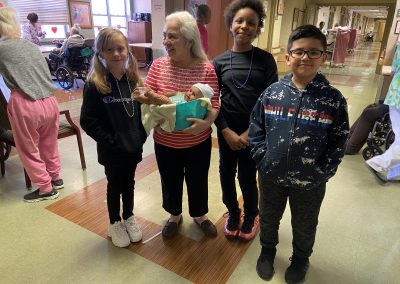




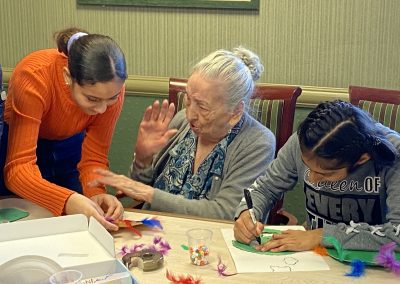
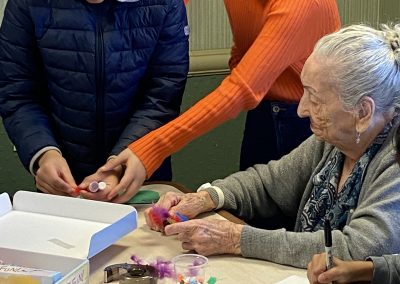
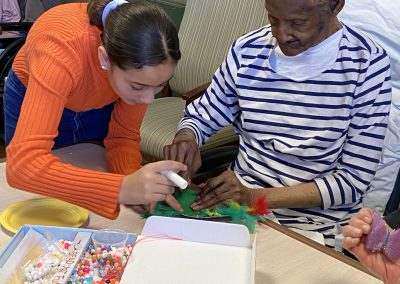

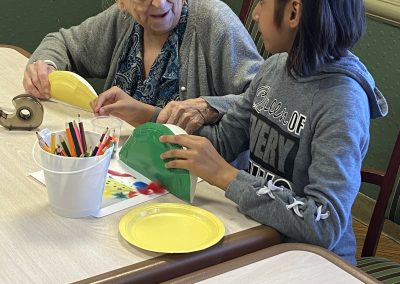

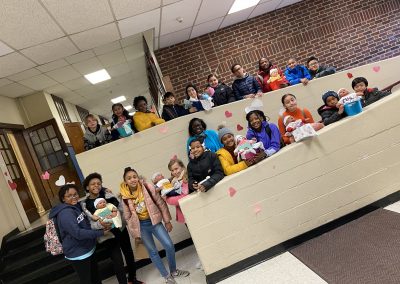

 been discovered. There are so many people who have varying points of view and ways of seeing things; yet, some are not willing to have an open mind or even opening the lenses. As I get older, I have learned not to cast judgments because I don’t know the situations that people are in and I don’t even know how I would feel if I were in the same circumstances – as a result I don’t judge. Instead, I think or wonder what could cause the person to act or respond a particular manner. It is often easy to assume, or even do the stereotypical norm, rather than to ask people if they are okay or just simply to respond with a smile.
been discovered. There are so many people who have varying points of view and ways of seeing things; yet, some are not willing to have an open mind or even opening the lenses. As I get older, I have learned not to cast judgments because I don’t know the situations that people are in and I don’t even know how I would feel if I were in the same circumstances – as a result I don’t judge. Instead, I think or wonder what could cause the person to act or respond a particular manner. It is often easy to assume, or even do the stereotypical norm, rather than to ask people if they are okay or just simply to respond with a smile. Then we can look at it from the classroom, one teacher might grade a paper based on his or her way of interpreting while another give another grade, who is to say that either teacher is wrong? I suppose that is why there is a rubric used to grade papers so that each person involved will know the established standards.
Then we can look at it from the classroom, one teacher might grade a paper based on his or her way of interpreting while another give another grade, who is to say that either teacher is wrong? I suppose that is why there is a rubric used to grade papers so that each person involved will know the established standards. perspective without giving a few more examples of how perspective affect family. One person might think that family is important and another think it is not. Yet whatever the person is doing does not adequately demonstrate the importance of family. One person might be saying it is important but does not want to spend time with the family during special ‘family’ holidays. Similarly, another might believe that bigger is always better or that entertainment is more important that the value placed on education. Are we able to separate our perceptions from our decision making? In all honesty, we sometimes allow our perception to get in the way of a new learning experience or simply getting to know someone. Are we willing to run that risk by simply casting judgments? This decade, we should seek to understand and be ready with a possible alternative suggestion rather than cast judgment. Who says that one person’s weed isn’t another’s flower? Similar to one person’s trash being another’s treasure!
perspective without giving a few more examples of how perspective affect family. One person might think that family is important and another think it is not. Yet whatever the person is doing does not adequately demonstrate the importance of family. One person might be saying it is important but does not want to spend time with the family during special ‘family’ holidays. Similarly, another might believe that bigger is always better or that entertainment is more important that the value placed on education. Are we able to separate our perceptions from our decision making? In all honesty, we sometimes allow our perception to get in the way of a new learning experience or simply getting to know someone. Are we willing to run that risk by simply casting judgments? This decade, we should seek to understand and be ready with a possible alternative suggestion rather than cast judgment. Who says that one person’s weed isn’t another’s flower? Similar to one person’s trash being another’s treasure!